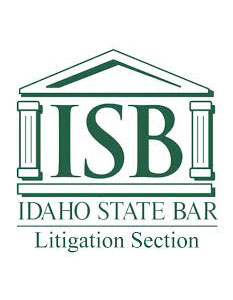Slip and fall incidents can result in serious injuries that have a profound impact on the victim’s life. In Idaho, as in many other states, proving liability in such cases is a complex process that requires a thorough understanding of the law, diligent investigation, and effective presentation of evidence. To successfully navigate this process, it is crucial to comprehend the legal principles that underpin slip and fall claims and to recognize the specific elements that must be established to prove liability.
The Legal Foundation of Slip and Fall Claims in Idaho
Slip and fall cases in Idaho fall under the broader category of premises liability law. Premises liability holds property owners and occupiers responsible for injuries that occur on their property due to hazardous conditions. The underlying principle is that property owners owe a duty of care to those who enter their premises. This duty involves maintaining a safe environment and addressing any potential dangers that could cause harm to visitors. To prove liability in a slip and fall case, the injured party must demonstrate that the property owner or occupier breached this duty of care, and that this breach directly caused their injuries.
Establishing the Duty of Care
The first step in proving liability is establishing that the property owner or occupier owed a duty of care to the injured party. This duty of care varies depending on the status of the visitor. In Idaho, visitors are typically categorized as invitees, licensees, or trespassers.
Invitees are individuals who enter the property for a business purpose, such as customers in a store. Property owners owe the highest duty of care to invitees, which includes regularly inspecting the property for hazards and promptly addressing any dangers. Licensees are social guests or individuals who enter the property for non-business purposes. Property owners owe a duty to warn licensees of known hazards that are not obvious.
Trespassers are individuals who enter the property without permission. While property owners owe only a limited duty to trespassers, they must refrain from willfully or wantonly causing harm.
Identifying the Hazard
Once the duty of care is established, the next step is to identify the hazardous condition that caused the slip and fall. This condition could be anything from a wet floor, icy sidewalk, uneven pavement, or poorly lit area. It is essential to document the hazard as thoroughly as possible. Photographs, videos, and witness statements can serve as valuable evidence. Additionally, maintenance records and incident reports may provide insights into whether the property owner was aware of the hazard and whether appropriate measures were taken to address it.
Proving Knowledge of the Hazard
To hold a property owner liable, it must be demonstrated that they knew or should have known about the hazardous condition. Actual knowledge means the property owner was directly aware of the hazard. Constructive knowledge, on the other hand, means that the property owner should have known about the hazard through reasonable inspection and maintenance of the property. Proving constructive knowledge often involves showing that the hazardous condition existed for a sufficient period, giving the property owner a reasonable opportunity to discover and remedy it. Surveillance footage, maintenance logs, and witness testimony can be instrumental in establishing this element.
Demonstrating the Breach of Duty
After establishing that the property owner knew or should have known about the hazard, it must be shown that they failed to take appropriate action to address it. This breach of duty can be demonstrated by illustrating that the property owner did not follow reasonable practices to maintain a safe environment.
For example, if a grocery store failed to clean up a spill within a reasonable timeframe or did not place warning signs around the hazard, it can be argued that they breached their duty of care. Evidence such as cleaning schedules, employee training manuals, and company policies can help establish whether the property owner adhered to reasonable standards of care.
Causation and Damages
In addition to proving the existence of a hazard and the property owner’s breach of duty, it is crucial to establish a direct link between the breach and the injuries sustained. This element, known as causation, requires demonstrating that the hazardous condition was the proximate cause of the slip and fall and the resulting injuries. Medical records, testimony, and accident reconstruction reports can be invaluable in proving causation. It is important to show that the injuries would not have occurred but for the hazardous condition created by the property owner’s negligence.
Overcoming Defenses in Slip and Fall Cases
Property owners often raise several defenses in slip and fall cases to avoid liability. One common defense is comparative negligence, which argues that the injured party’s own negligence contributed to the accident. Idaho follows a modified comparative negligence rule, meaning that if the injured party is found to be 50 percent or more at fault, they are barred from recovering damages. If the injured party is less than 50 percent at fault, their damages are reduced by their percentage of fault. To counter this defense, it is essential to gather evidence that minimizes the injured party’s responsibility for the accident and highlights the property owner’s negligence.
Another defense is the “open and obvious” doctrine, which contends that the hazardous condition was so apparent that a reasonable person would have noticed and avoided it. To overcome this defense, it must be shown that the hazardous condition was not obvious or that the injured party had a legitimate reason for not noticing it. For example, poor lighting or distractions caused by the property owner’s layout could explain why the hazard was not seen.
Related Videos
Rules of a Personal Injury Claim
Choosing a Personal Injury Attorney
The Role of Legal Representation
Navigating the complexities of proving liability in a slip and fall case requires a comprehensive understanding of the law and meticulous attention to detail. An experienced personal injury attorney can provide invaluable assistance in building a strong case. They can conduct a thorough investigation, gather and preserve crucial evidence, and present a compelling argument to demonstrate the property owner’s liability. Additionally, legal representation can help negotiate with insurance companies and advocate for fair compensation for the injured party’s medical expenses, lost wages, pain and suffering, and other damages.
Verdicts & Settlements
The Importance of Timely Action
In Idaho, slip and fall claims are subject to a statute of limitations, which is the legal timeframe within which a lawsuit must be filed. Generally, the statute of limitations for personal injury claims, including slip and fall cases, is two years from the date of the accident. Failing to file a claim within this period can result in the loss of the right to seek compensation. Therefore, it is crucial to take timely action to preserve evidence, identify witnesses, and protect the injured party’s legal rights.
Advocating for Idahoans
If you or a loved one has been injured in a slip and fall accident in Idaho, it is essential to seek legal assistance to ensure your rights are protected and to maximize your chances of obtaining fair compensation. The experienced attorneys at Hepworth Holzer, LLP are dedicated to providing comprehensive legal support and guidance throughout the process. With a deep understanding of premises liability law and a commitment to achieving justice for our clients, we are here to help you navigate the complexities of your case. Contact Hepworth Holzer, LLP today to schedule a consultation and take the first step towards securing the compensation you deserve.












